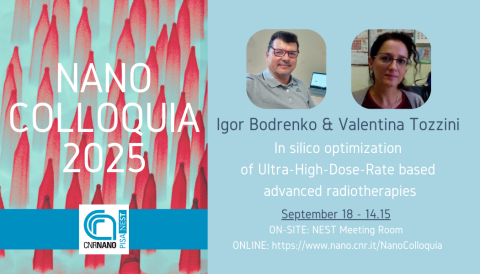
Radiotherapy (RT) is one of the primary weapons against cancer, with the main drawback of toxicity for the normal tissues surrounding irradiated areas. In the last decade, evidences were established that ultra-high dose rate (UHDR) irradiations can selectively spare normal tissues while keeping efficacy on the cancerous ones, especially when coupled to time pulsed (“FLASH” RT) and comb shaped (mini-micro beam) irradiation modalities. While the clinical translation of these potentially disruptive new radiotherapy techniques is currently in the starting phase, the underlying mechanism of the differential effects in cancer vs normal tissues are not fully understood. A number of different hypotheses is currently under investigation involving, among others, non linear effects in radicals production/depletion, detoxify/recover pathways, intra/inter cellular diffusion of toxic substances/recovery signaling, and others, none of which are entirely satisfactory.
Any of the hypothetical determinant processes involves a cascade of events from the subcellular level up, the study of which requires an inherently multidisciplinary effort. In this talk, we first contextualize the problem and illustrate the general approach used in the modeling group @NANO to study the intrinsic selectivity of FLASH-RT-related techniques. This involves the combination of multi-scale Molecular Dynamics and Monte Carlo simulations with empirical stochastic and kinetic models, and neural network algorithms. We then focus on the optimization of a stochastic minimalist model including the main subcellular features and capable of capturing the differential effects. This approach relies on continuous interactions with experimental groups producing radio-biological data in vitro and in vivo, which we realize within large collaborations with other CNR institutes, UniPi, AoPI, INFN-sezPI and CPFR, supported by PNRR, FondazionePisa, INFN, MIUR and EU.